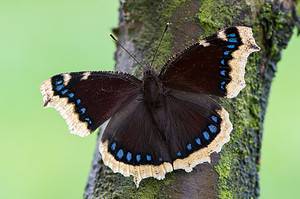Butterflies are some of the most beautiful and interesting creatures in nature. They come in all shapes, sizes, and colors, making them a popular choice for garden decorations. However, they can also benefit our ecosystems by pollinating plants or acting as food sources for other animals. This article will review what butterflies live in Massachusetts.
Massachusetts has over 100 species of butterflies, from common varieties like Monarchs to rarer ones like the Eastern Tiger Swallowtail. To attract these amazing creatures to your garden, you should provide plenty of nectar-rich flowers throughout the growing season. Butterflies enjoy flowers such as coneflowers, lantana, phlox, and zinnias.
Butterflies need somewhere safe to lay their eggs, so consider adding host plants from which caterpillars can emerge – milkweed is an excellent choice! Lastly, ensure you have a water source nearby, such as a shallow birdbath or damp sand for butterflies to drink.
By creating a butterfly-friendly habitat in your backyard, you will enjoy seeing these enchanting creatures up close and helping keep their populations healthy with essential resources!
1. Pipevine Swallowtail

The pipevine swallowtail is among the poisonous Massachusetts butterflies.
©iStock.com/OGphoto
The Pipevine Swallowtail butterfly, Battus philenor, is a species of swallowtail butterfly that can be found in Massachusetts. Its wingspan is around 3 to 4 inches, and its body is black with white spots on the hind wing and blue-green eyespots on the forewing. The underside of their wings is duller in color than the upper side.
This species feeds mainly on nectar from flowers but will also feed off rotting fruit or sap oozing from trees. Its caterpillars usually feed off pipevines and Dutchman’s breeches plants before entering their chrysalis stage, where they transform into adult butterflies. These butterflies fly during daylight hours between April through October. They can often be seen near streams or other areas with wet soil conditions as they need these environments for mud puddling, which helps them obtain salts and minerals essential for their survival.
2. Black Swallowtail

Black swallowtail butterflies feed on nectar from zinnia, milkweed, and other flowers.
©Melody Mellinger/Shutterstock.com
The Black Swallowtail (Papilio polyxenes) is a species of butterfly found throughout North America. This species has three distinct subspecies, the Eastern Black Swallowtail (P. p. astyanax), the Western Black Swallowtail (P. p. indra), and the Anise Swallowtail (P.p.-anodyne). The adult butterflies are mostly black with yellow spots on their hindwings, and they have long tails that resemble those of swallows when in flight – hence their name!
They typically feed on nectar from many types of flowers, such as milkweed, thistle, clover, dandelion, and vetch. The caterpillars feed primarily on plants from the carrot family, including dill weed and parsley – though wild celery is also known to be eaten by some individuals! In Massachusetts specifically, these butterflies can most often be seen during warmer months fluttering around fields or gardens with plenty of flowers to feed upon!
3. Giant Swallowtail
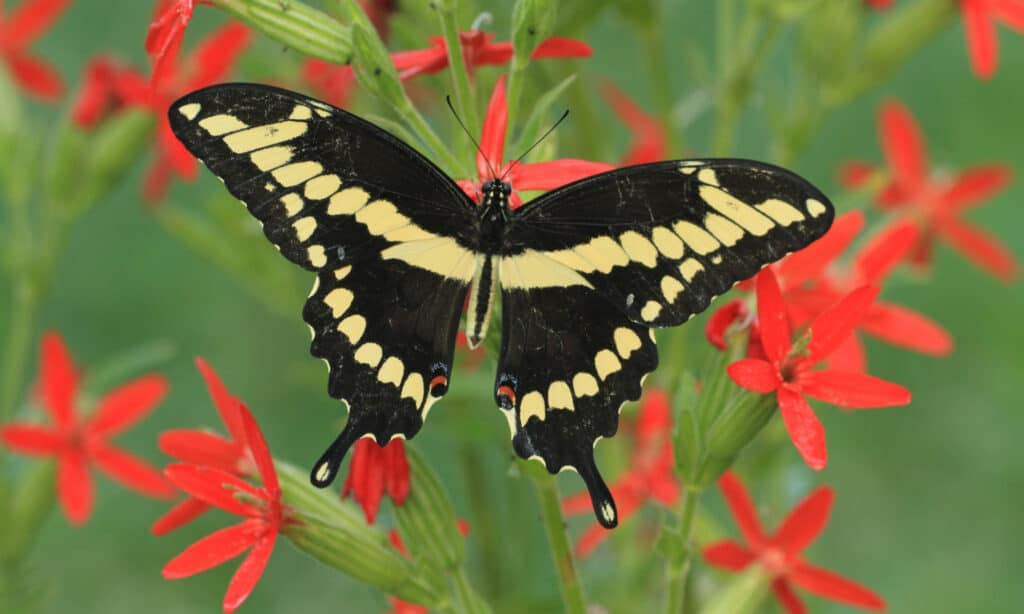
The Giant Swallowtail is a butterfly found in Massachusetts and other areas of North America.
©Kevin Collison/Shutterstock.com
The Giant Swallowtail butterfly, Papilio cresphontes, is a large and striking species that can be found in Massachusetts. It has black wings with yellow markings on the tips of its hind wings. The adults have a wing span of 4 to 6 inches, making them one of the largest butterflies in North America. They are primarily found near wooded areas such as forests or along riverbanks and tend to feed on various flowers, including milkweed and thistle. The larvae mainly consume plants from the citrus family, like oranges, limes, lemons, grapefruits, etc., while they also enjoy some herbs like parsley and fennel. This species is most active during warmer summer months but may sometimes be spotted later into autumn, depending on weather conditions.
4. Deleware Skipper
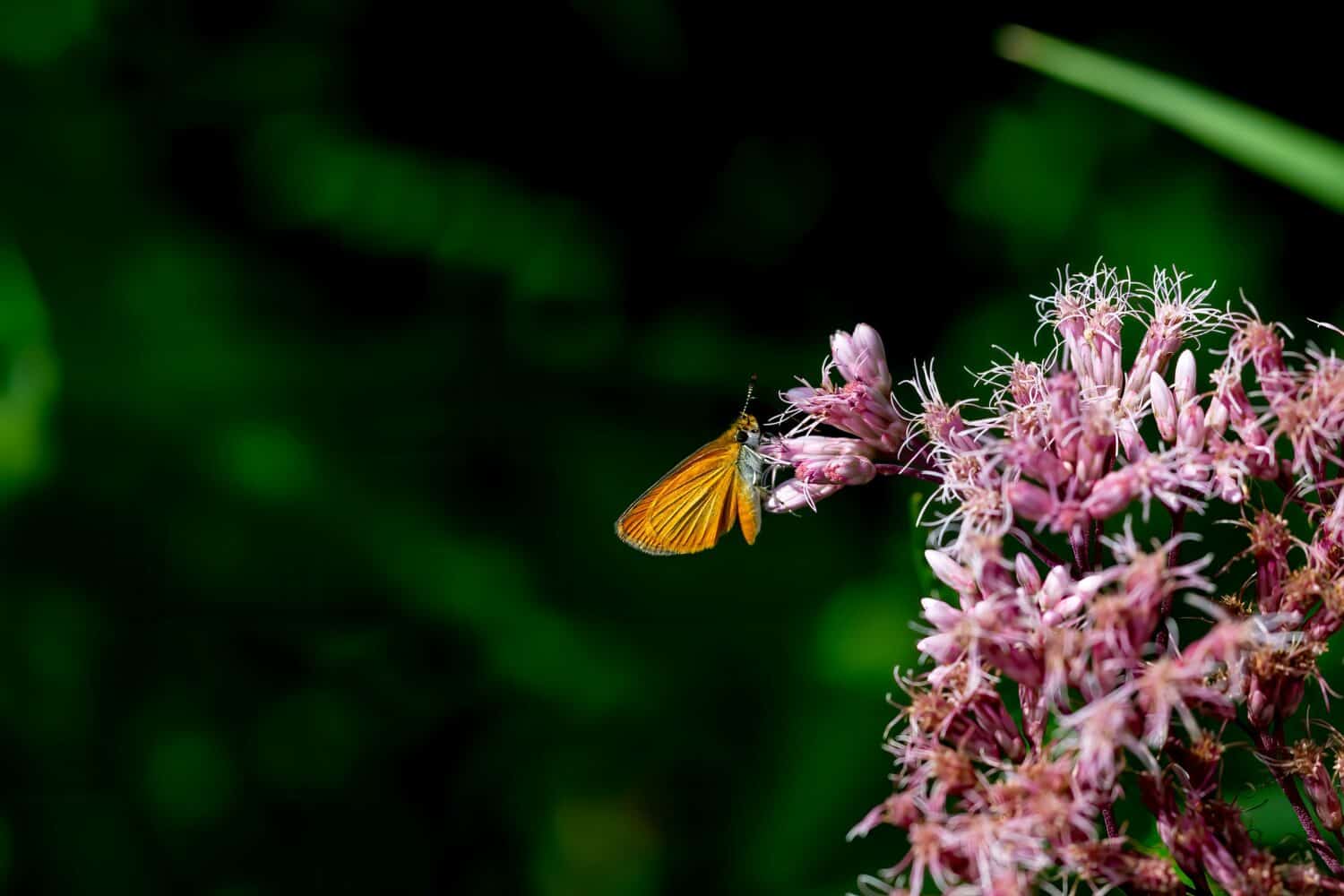
The wingspan of the Delaware skipper ranges from 1.5 – 2 inches.
©Karel Bock/Shutterstock.com
The Deleware Skipper (Anatrytone logan) is a butterfly native to the eastern United States, including Massachusetts. It has an orange-brown body with black markings on its forewings and hind wings. The wingspan of this butterfly ranges from 1.5 – 2 inches, and they tend to fly close to the ground. They prefer open fields or meadows with lots of grasses where they lay their eggs on grass stems, which hatch after about two weeks into larvae that feed on grasses for several weeks before pupating in mid-summer. The adult butterflies emerge in late summer/early fall and are commonly seen nectaring at flowers such as clover, aster, goldenrod, thistle, and milkweed until temperatures become too cold for them to survive, and the caterpillars go into hibernation for winter months.
5. Common Sootywing
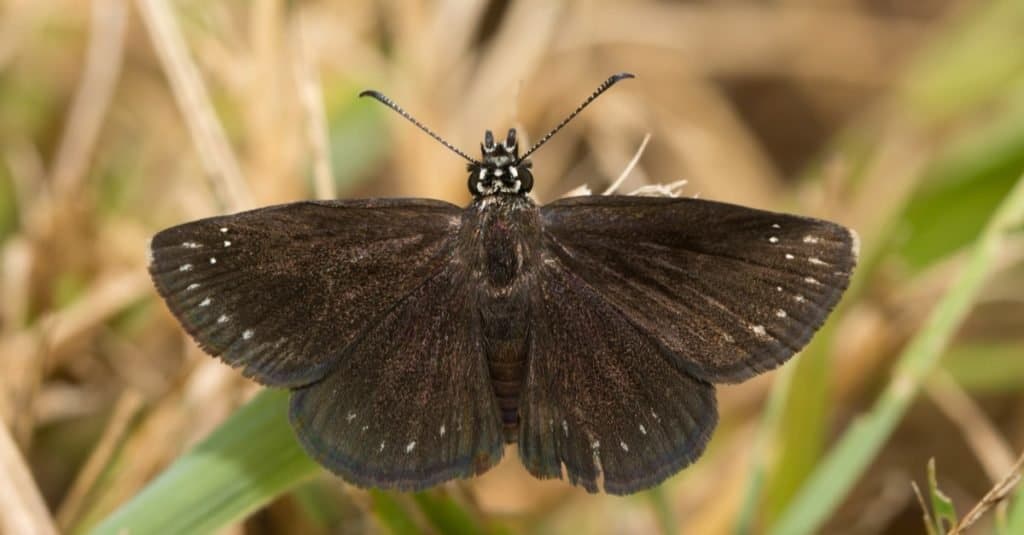
The Common Sootywing is one of the smallest butterflies.
©Sari ONeal/Shutterstock.com
The Common Sootywing (Pholisora catullus) is a species of butterfly found in the United States, particularly in the northeastern states, including Massachusetts. It has distinctive grey and black wings with small white spots on them, giving it its common name. The underside of its wings has yellowish-brown markings that help to camouflage it when resting among dead leaves or tree bark.
This species feeds mainly on clovers but will also feed on other legumes, such as vetch and alfalfa. They are usually seen flying low to the ground in sunny areas near meadows and fields. During mating season, they can congregate around flowering plants such as thistles, where males compete for females by displaying their beautiful wings to attract mates. The eggs this species lays hatch into larvae which remain hidden within rolled-up leaves until ready to pupate into butterflies about two weeks later before emerging from their chrysalis stage.
6. Persius Duskywing
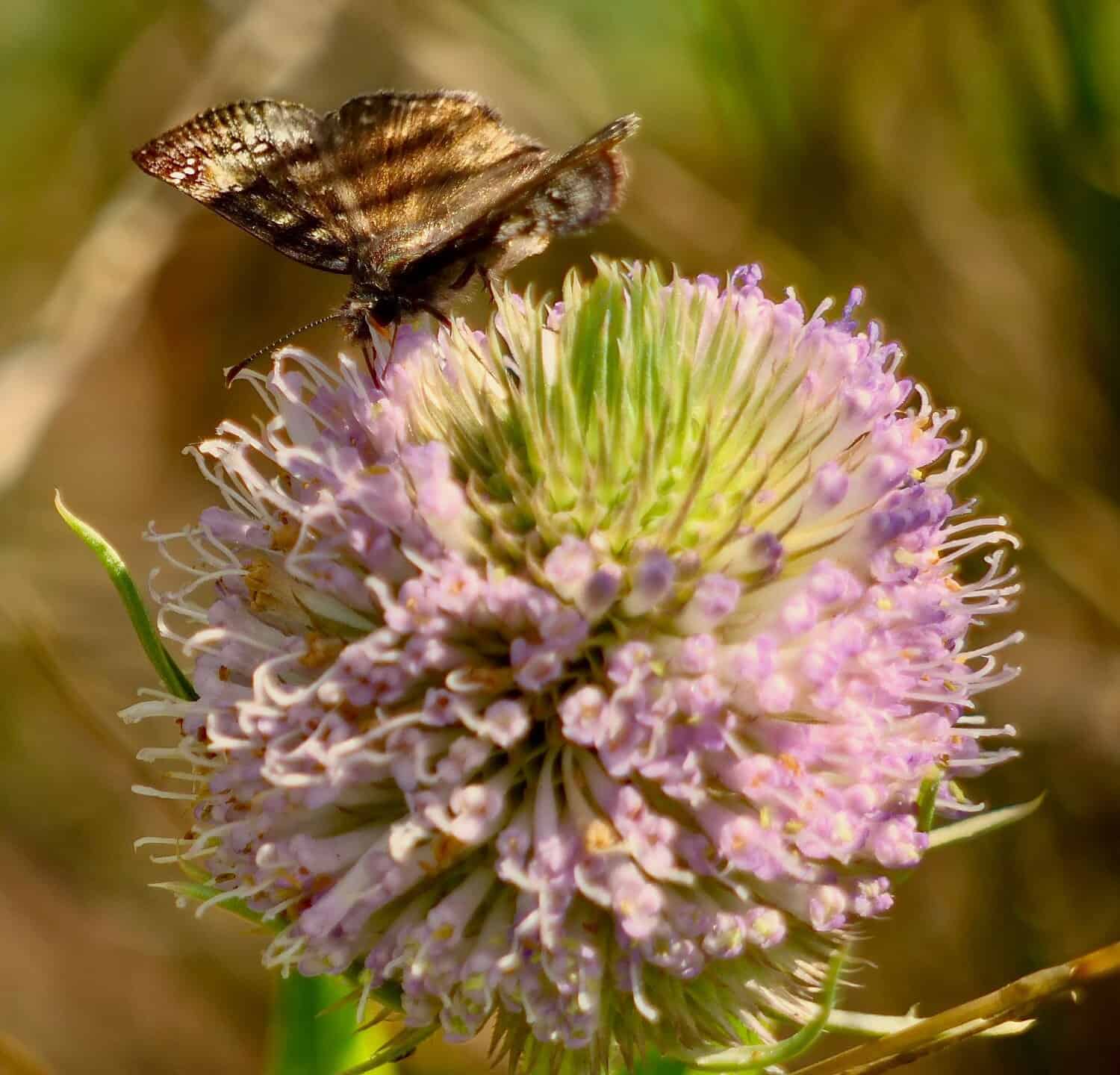
Persius duskywing butterfly lives in Massachusetts and is listed as threatened.
©Gejza Cepela/Shutterstock.com
The Persius Duskywing butterfly (Erynnis persius) is a small butterfly with a wingspan of 1.5-2 inches. It has a dark brown or blackish upper side, and the underside of its wings is lighter in color and has an orange hue. The hindwings have two prominent white spots on them, making them quite distinctive from other butterflies. This species can be found in woodlands and along woodland edges throughout Massachusetts during the summer months between May and September, usually seen flying low to the ground or resting amongst the foliage. Its caterpillars feed on various plants, including oaks, elms, willows, apple trees, and hawthorns. The adults prefer nectar from wildflowers such as milkweeds, thistles, and dogbane but may also visit gardens for their food sources if necessary.
7. Mustard White

Mustard white butterflies feed on cabbage and other brassica plants.
©Elisabeth B/Shutterstock.com
The Mustard White butterfly (Pieris napi) is a species of small to medium-sized white butterflies found in Massachusetts. They have yellow and black spots on the upper side of their wings, and these markings can vary slightly depending on the individual. The underside of the wings is a pale yellowish color with brown lines that form an intricate pattern across them.
These butterflies feed mainly on cruciferous plants like cabbage, broccoli, kale, and mustard greens, as well as some legumes such as clover and alfalfa. They lay eggs singly or in groups near host plants, where they will develop into caterpillars before transforming into adult butterflies within two weeks. During the warmer months from April through October, adults fly around gardens seeking food sources or basking in sunlight to regulate their body temperature.
8. Orange Sulphur
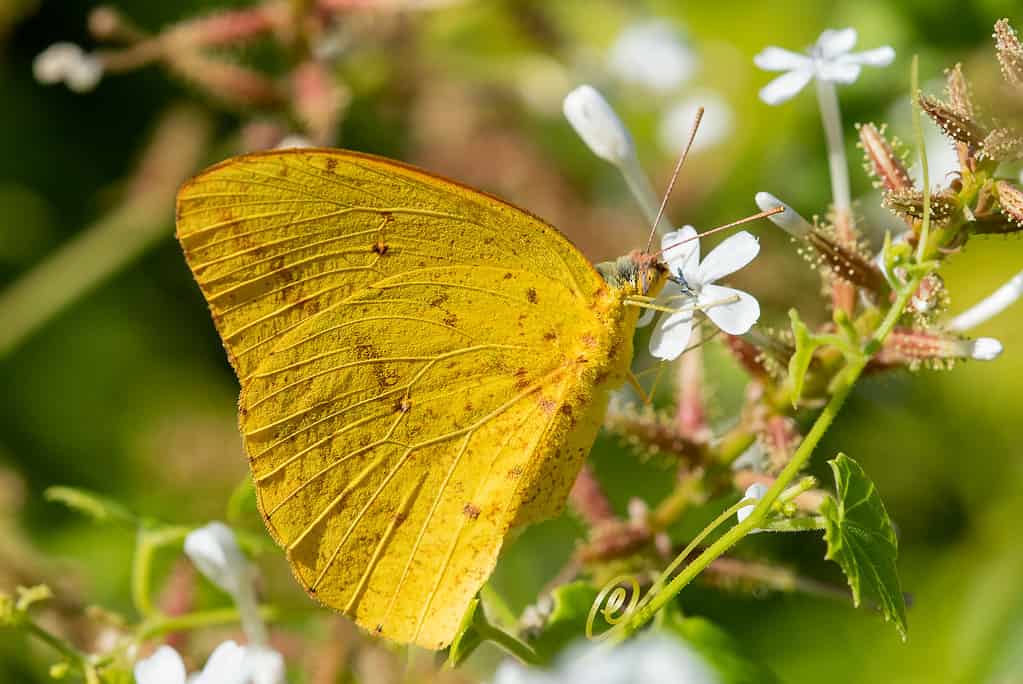
Orange Sulphur butterflies have orange-yellow bodies with light spots on their wings’ upper side.
©Paul Sparks/Shutterstock.com
The Orange Sulphur butterfly (Colias eurytheme) is a species of butterfly that can be found in the state of Massachusetts. This species has an orange-yellow body with a wingspan measuring between 1 and 2 inches wide. The upper side of their wings features two rows of brown spots, while the undersides are mostly yellowish-white in color. Male butterflies have darker hindwings than females and an additional row of submarginal spots near the edge of their forewings.
These butterflies feed on pollen and nectar from various flowers, including clovers and vetches, though they will also visit mud puddles to obtain essential salts and minerals for their diet. They typically live in open meadows or grassy fields with plenty of flowering plants to feed on throughout the day.
9. American Copper
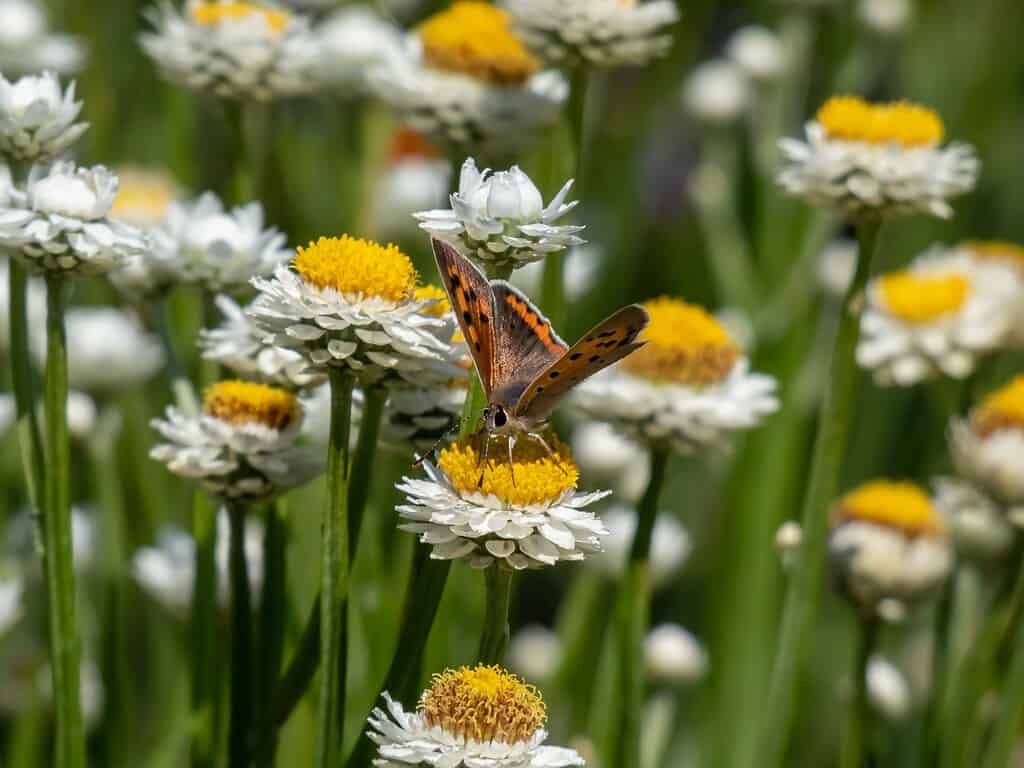
The American Copper lives in Massachusetts, often among meadows and fields.
©Kristine Rad/Shutterstock.com
The American Copper butterfly (Lycaena phlaeas) is a small, copper-colored butterfly that can be found throughout Massachusetts. It has two pairs of wings and an orange bar on each forewing. Its body is black with white spots, and its antennae are curved. This species prefers open areas such as meadows, fields, gardens, and the edges of woods.
The adult butterflies feed on nectar from flowers, while the caterpillars feed on wildflowers like clovers, violets, and bedstraws. They fly from mid-May to late September in Massachusetts, with one generation yearly in most parts of the state. However, they may have up to three generations per year in more southern parts of the state.
10. Eastern Pine Elfin
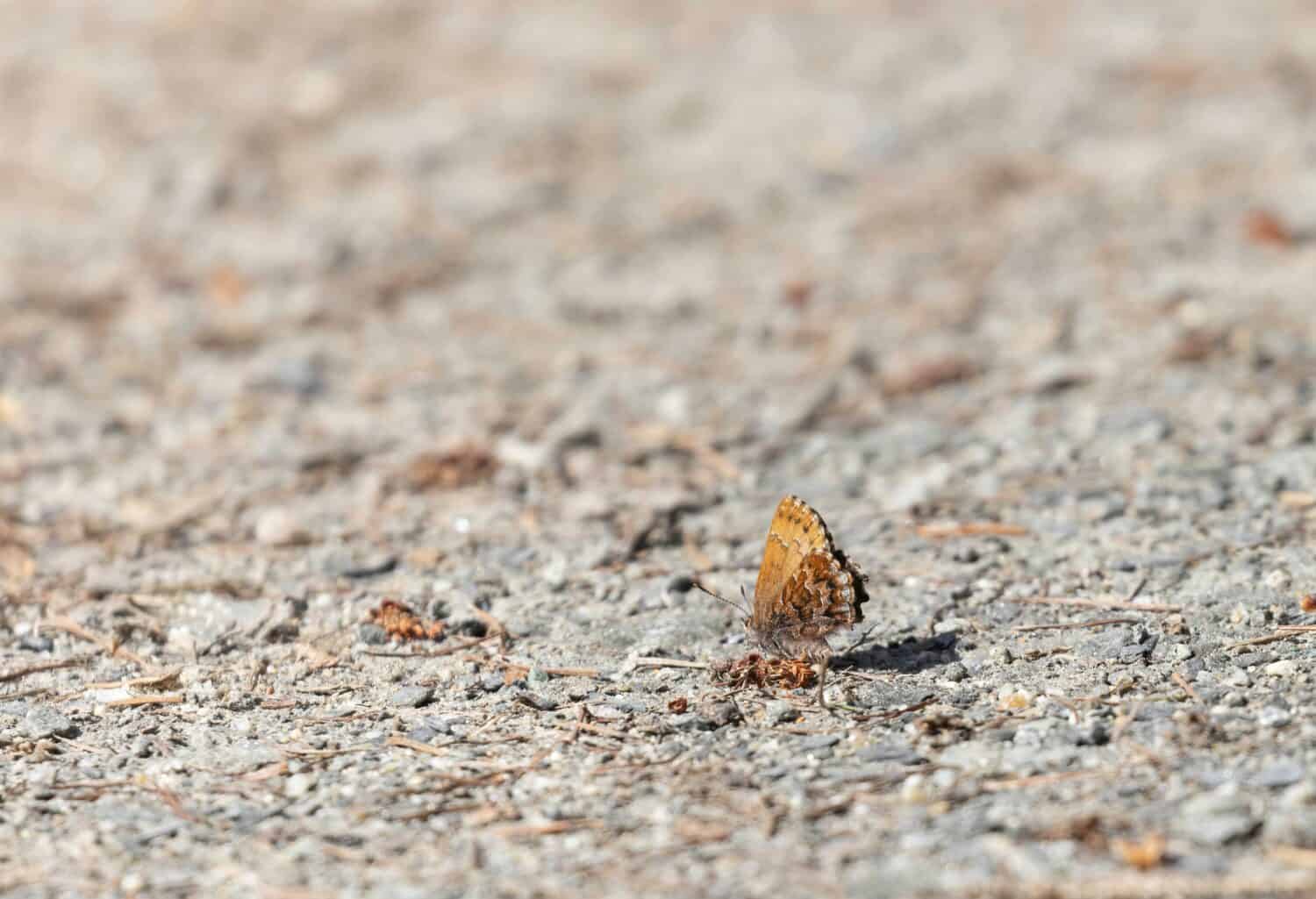
Eastern Pine Elfin butterflies, true to their name, live in pine barrens.
©ElinorOsbornPhotography/Shutterstock.com
The Eastern Pine Elfin (Callophrys niphon) is a small butterfly that can be found in Massachusetts. It has a wingspan of about 1 inch, and its wings are grayish-brown with orange spots near the tips of each wing. Its head and thorax are dark brown, and it has yellow antennae. This species typically lives in pine barrens or dry open woodlands.
The caterpillars feed on the needles of pitch pines, white pines, jack pines, red pines, mugo pines, Scotch pine, and eastern white cedar trees. They also occasionally feed on deciduous trees such as oaks and hickories. The adults emerge from late April to early June, depending on location but usually around mid-May in Massachusetts before migrating southward for the summer months. They return again in late August through October when they lay their eggs which will hatch during the following spring season completing their life cycle anew!
11. Striped Hairstreak

Striped hairstreak butterflies are often found feasting on milkweed.
©Paul Reeves Photography/Shutterstock.com
The Striped Hairstreak (Satyrium liparops) is a small butterfly found in Massachusetts. It has an orange-brown body with white stripes on its wings and black tips on the forewings. The underside of the wings is mottled brown with light blue spots near the edges. This butterfly can be seen from late May through September, feeding on nectar from flowers like milkweed, blazing star, thistles, and clovers.
They tend to fly low over meadows or fields, searching for food sources as they flit around quickly. They also roost at night in trees or shrubs near their food sources during warm weather months. Striped hairstreaks are particularly fond of wetlands with plenty of moisture and food availability. However, they can still be found in other areas with suitable habitats, such as woodlands and grasslands too!
12. Eastern Tailed-Blue
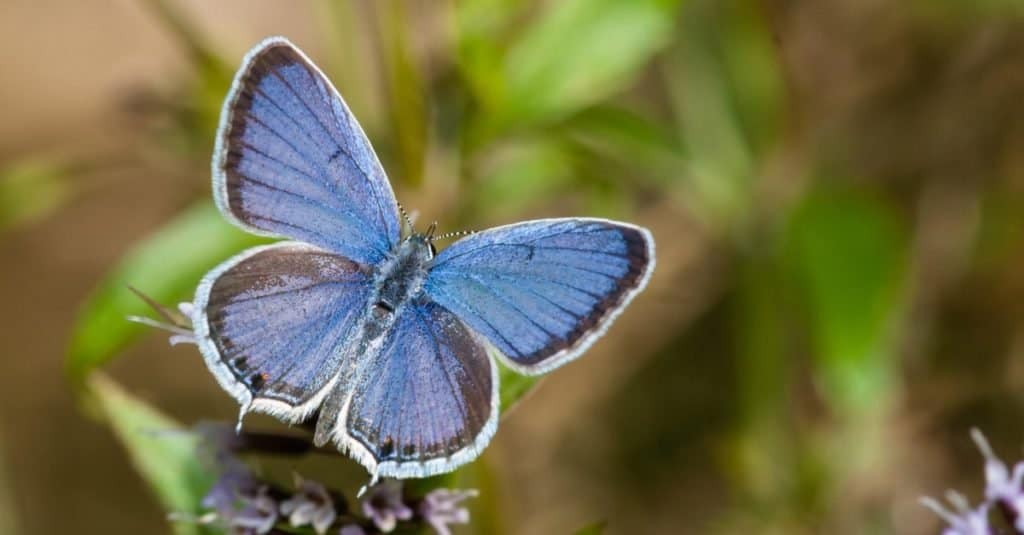
The Eastern tailed-blue butterfly features tails on its hindwings.
©Frode Jacobsen/Shutterstock.com
The Eastern Tailed-Blue butterfly (Everes comyntas) is a species of small blue butterfly found throughout North America. It typically has two pairs of tails on the hind wings and can be distinguished from other blues by its smaller size, lighter coloration, and distinctive tail markings. The adults feed mainly on flower nectar, often seen in gardens and along roadsides.
They lay their eggs singly on the leaves of various herbaceous plants such as clover, vetch, lupine, false indigo bush, sweet pea vine, and alfalfa. After hatching from the egg stage, they go through three larval instars before entering into a pupal stage, where they remain for about three weeks until emerging as adult butterflies. The Eastern Tailed-Blue is generally quite common throughout Massachusetts during summertime months, with numbers sometimes increasing rapidly after warm spring weather arrives to bring out more flowers for them to feed upon!
Summary of 12 Butterflies That Live in Massachusetts
- Pipevine Swallowtail
- Black Swallowtail
- Giant Swallowtail
- Deleware Skipper
- Common Sootywing
- Persius Duskywing
- Mustard White
- Orange Sulphur
- American Copper
- Eastern Pine Elfin
- Striped Hairstreak
- Eastern Tailed-Blue
Despite how many butterflies live in Massachusetts, unlike other states, the Commonwealth doesn’t feature an official butterfly. Several past petitions suggest that the Monarch or Black Swallowtail be the official state butterfly.
The photo featured at the top of this post is © Paul Reeves Photography/Shutterstock.com
Thank you for reading! Have some feedback for us? Contact the AZ Animals editorial team.





